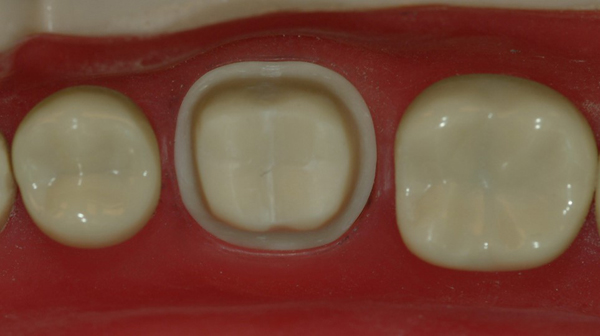On Zirconia
Full contour zirconia (FCZir) now is being used routinely for everything from anterior single crowns and bridges to full-arch implant prostheses. Personally, I have found the esthetics of newer types of FCZir. Zirconia, mainly consisting of ZrO 2, has the highest mechanical strength and fracture toughness at room temperature of all major fine ceramics. It is used to make cutting blades, scissors and knives. It is also used for pump parts due to its superior surface smoothness. Related products for Zirconia.
General information about zirconia
- Zirconia has some distinct advantages as a material for crowns: It can be matched to the color of existing teeth. It is extremely strong, requiring less tooth preparation than other materials. It can be layered with porcelain, further improving its aesthetic appearance. Zirconia crowns can be bonded or cemented, giving your dentist more options.
- Zirconia is one of several newer ceramic-like materials that combine the strength of metal with the aesthetic appeal of porcelain. A report by the Canadian Agency for Drugs and Technologies in Health.
- Zirconia (ZrSiO4) is a mineral belonging to the mineral class of Silicates, discovered in 1789 by M.H. Klaproth.
- Zirconium dioxide (ZrO2) is a compound of the element zirconium occurring in nature and has already been used for 10-15 years in the prosthetic dentistry. It is partially stabilized by yttrium and enriched with aluminium. This results into positive characteristics such as high flexural strength (>1400 MPa*), hardness (1200 HV*) and a Weibull module of 15,84*.
(* Values of Zirkonzahn ICE Zirconia Translucent)

Where is it used?
- In addition to its high resistance Zirconia is fully biocompatible. That is why it is increasingly used in the medical field (auditory, finger and hip prostheses) and in dentistry (pins, crowns and bridges restorations, implants). In industry it has already been used for more than 40 years. The white basic colour of Zirconia, the possibility of colouring in dentin colours and its biotechnological characteristics enable the production of biocompatible, high-quality and esthetical dental and implant reconstructions.
 Is Zirconia radioactive?
Is Zirconia radioactive?- Everything is radioactive! The human body has 6000 Bq. One kilogram Zirconium dioxide has approx. 2.3 Bq. A crown weighs approx. 1 gr., metal ceramic can have up to 1000 Bq/kg.
Are removable dental prostheses possible?
- Yes, if certain physical laws of the construction technology for Zirconia are taken into account and the dental technician masters the manufacturing technology.
Why can bridges break?
- Bridges can break if fundamental errors are made in the frame structure manufacturing. There is a Zirkonzahn calculation tool for dimensioning bridge structures.
How does the aging process of Zirconia and the involved loss of strength compare with the usual metal ceramics?
- All frame structure materials age, including metals. The flexural strength before aging of metal is approx. 500 MPa, of ICE Zirconia approx. 1400 MPa. With a theoretical, but so far not proven loss of strength of 30% still remain 980 MPa in respect to Zirconia.
Aesthetics comparison zirconia/metal ceramics
- ICE Zirkon frame structures are translucent and therefore aesthetically superior in comparison with opaque metal frame structures.
How does the durability of Zirconia frame structures including veneering compare with porcelain-fused-to-metal crowns?

- When the framework design is correct in terms of dimension and precision there are no disadvantages compared with
porcelain-fused-to-metal crown technology.
How do the costs compare with metal ceramics?
- Regarding the material use Zirconia is equivalent or just slightly more expensive than metal ceramic.
Is full Zirconia possible?
- Experts among the dental technicians are able to realize conventionally precious metal-based dental prosthesis constructions in zirconia.
- In this connection Zirkonzahn has developed the high translucent Prettau® Zirconia and a colouring technology especially coordinated with it. Thus, aesthetically appealing full Zirconia restorations can be manufactured.
Features
Zirconia has excellent mechanical properties, with higher strength and fracture toughness than alumina.
It is also used in milling machines, sliding parts and cutting blades.
Zirconia exhibits great heat insulation, as its thermal conductivity is less than 1/10 that of other ceramics.
Configuration
Dimensional precision achieved by machining
When dimensional precision is required for machined ceramics, Kyocera is capable of achieving the tolerances as shown in the table below. If greater tolerances are required, please consult us.
MACHINING DIMENSIONAL PRECISION
(Data are in mm unless otherwise specified)
2.Round and Square Bars
PRECISION MACHINED PRODUCTS
Ultra-precision is possible with Kyocera's unique techniques.
Precision machining is affected by shape and material.
Some practical examples are shown in the table below.
Does Food Stick On Zirconia Material
* Surface roughness depends on the material. The data shown here indicates where alumina is used.
Property
Barium On Zirconia
* The values are typical material properties and may vary according to products configuration and manufacturing process. For more details, Please feel free to contact us.
Zirconia On Teeth
* 1: All values for apparent density and bulk density are the same, except for A482R which lists apparent density only.